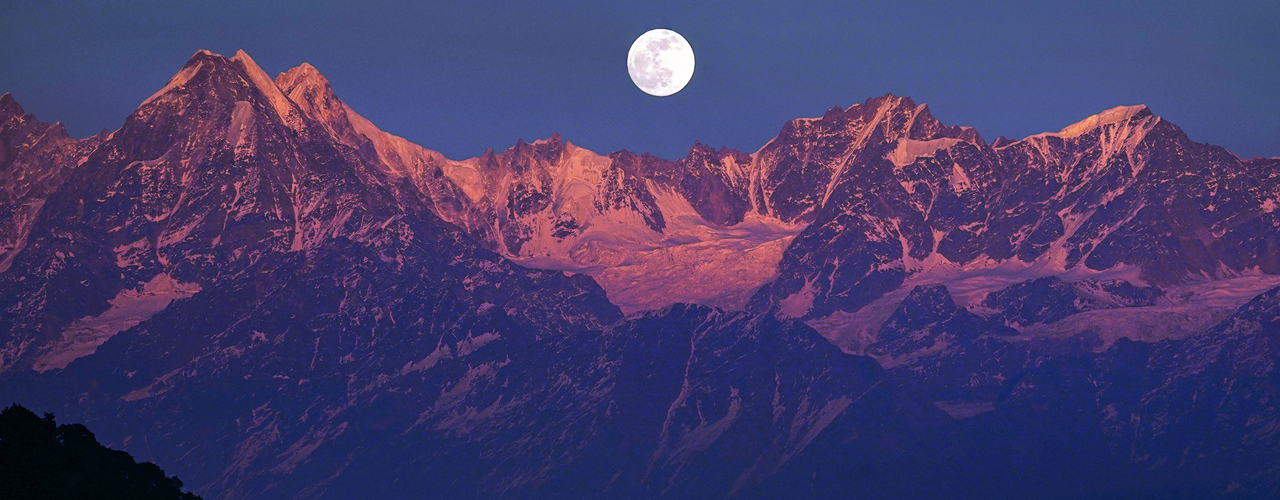
“No culture can live if it attempts to be exclusive.” -Mahatma Gandhi
Every twelfth year Uttrakhand hosts the biggest religious gathering in the world-KhumbhMela, in the pilgrimage town of Haridwar. Besides this, some other important festivals celebrated in the hill state are- BaithakiHoli, Khari Holi, MahilaHoli, Ganga Dussehra, MakarSakranti, Ghee Sakranti, Katarua, Vat Savitri, Phul Dei etc. In addition, fairs also hold great significance.
Holi in Kumaon is an enormously extravagant affair. Its uniqueness lies in it being a musical affair, be it the BaithakiHoli, the Khari Holi or the MahilaHoli. Also the festivities of Holi last for almost two months starting with the festival of BasantPachami, which traditionally signifies the end of winter season.
The BaithakiHoli and Khari Holi are unique in that the songs on which they are based have a touch of melody, fun and spiritualism. These songs are essentially based on classical ragas but have heavy influences of Kumaoni folk musictraditions. BaithakiHoli begins from the premises of temples, where Holiyars (the singers of Holi songs) as also the people gather to sing songs to the accompaniments of classical music instruments like harmonium and table. Khari Holi usually starts a little later than BaithakiHoli and is mostly celebrated in the rural areas of Kumaon. The songs of the Khari Holi are sung by people, sporting traditional white nokdaartopi, churidaarpayajama and kurta. Khari Holi is filled with excitement and frolic as opposed to the more sombre nature of the BaithakiHoli.
The Purnagiri Fair, situated on the hill top, 20 kilometeres from Tanakpur in the district of Champawat. The temple of Purnagiri attracts thousands of devotees throughout the year. Also known as ‘Purnangiri temple’ which means temple of good deeds, it organises the famous Purnagiri between the months of poush and chaitra, when the entre valley reverberates with the enchanting sounds of hymns and devotional songs. The annual fair starts from VishuwatSankranti and continues for forty days.
Devidhura is situated in the Champawat district, at the junction of Almora, Pithoragarh and Nainital districts. The unusual Devidhura fair held every year in the Varahi Devi temple, on the day of Rakshabandhan which attracts visitors from far and wide. The fair is famous for its enchanting folk songs and dances besides being known for its thrilling tradition of Bagwal, where two groups of dancing and singing people throw stones at each other, while they try to protect themselves with the help of large wooden shields.
KandaliMahotsav, one of the most unique festivals of Uttarakhand is celebrated in the Chaudans region of Pithoragarh district. Named after the Kandali flower, which blooms in the region once every 12 years, the festival is celebrated for a week with gaiety and enthusiasm, in the months between August and October.
KandaliMahotsav is an important festival for the womenfolk as they lead the possession armed with a rill, followed by children and men armed with swords and shields. Dressed in their traditional best, the locals gather around a tree on the sacred ground of the village, where they perform the rituals. The festival commences with an auspicious ceremony where the courtyard of every house is beautifully decorated. Shiva linga made of barley and buck wheat flour mixture is worshipped and the locals pray for the prosperity and well-being of the community. The individual pujas are followed by a community feast and the celebrations continue throughout the night.
The word “Aipan” is a derivative of ‘Arpan’. A commonly used word for it is “Likhai” (writing), although it is a pattern made with the fingers. Aipan are used as ritual designs for Pujas, festivals and ceremonies connected with birth, janeu, marriage and death. Aipan are usually drawn at the place of worship of the houses and the main entry doors of the houses or in the front courtyard. The Chowkies of mango wood are painted with Aipan’s special designs, each valuable for a special occasion. The raw materials used are simple ochre (Geru ) colour and rice paste. Mostly women paint the designs on the floors and walls of their homes using the last three fingers of the right hand. However, the ones with Geru patterns are drawn by a free hand.
‘Pichhauras’ or dupattas are also decorated are Aipan designs and patterns. During the time of the Harela festival of the Kumaon, there is a tradition of making clay idols (Dikaras). The Swastik pattern has immense significance in Aipan patterns as well. It is drawn in some form or the other. Most of the religious rituals are carried out by drawing Swastika. In Hindu mythology, Swatika represents all gods and goddess. Pichhauras which are worn by Kumaoni women during festivals and marriages carry Swastik Aipan design quite aesthetically.
Now a days, Aipan patterns are used on varied items like greeting cards, wall hangings, cushion covers, table cloths, even T-Shirts. The decorative patterns used to adorn doorways that have been adapted for gift tags, bookmarks, clay items, wooden boxes, trays and coasters.
Aipan are known by different names and are quite popular in many parts of India. These are called Alpana in Bengal, Satiya in Gujrat, Rangoli in Maharashtra, Chowk pooran in Uttar Pradesh, Kolam in South India, Madne in Rajasthan, Arichan in Bihar and Bhuggul in Andhra Pradesh.